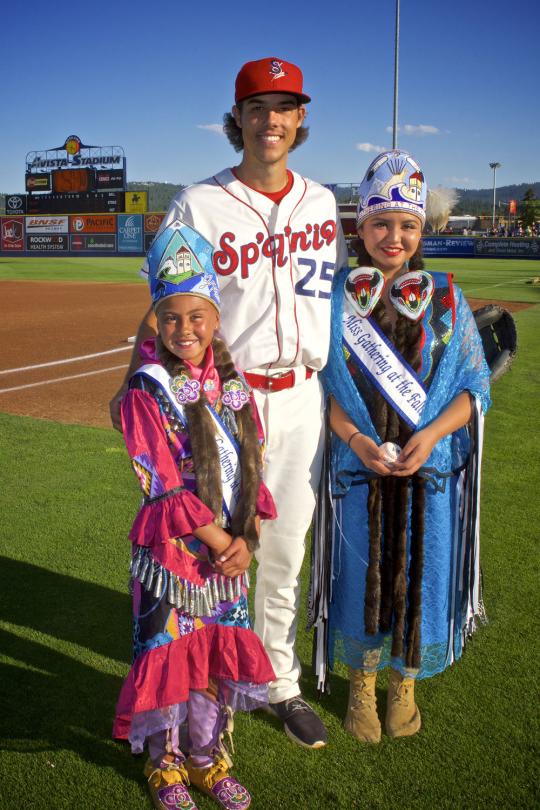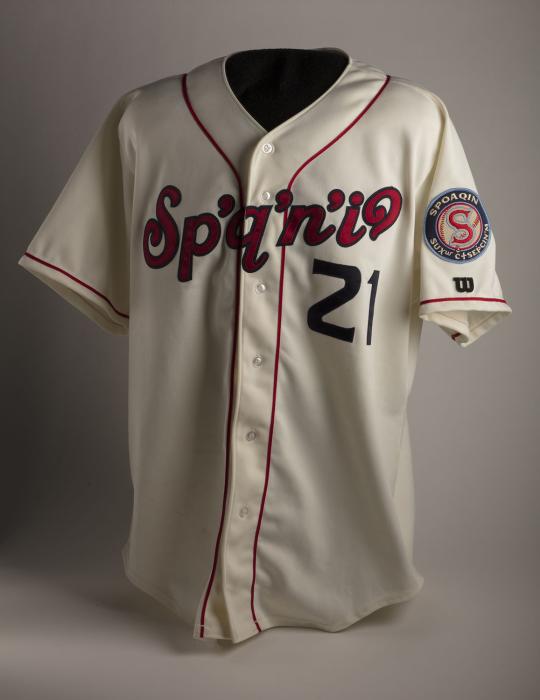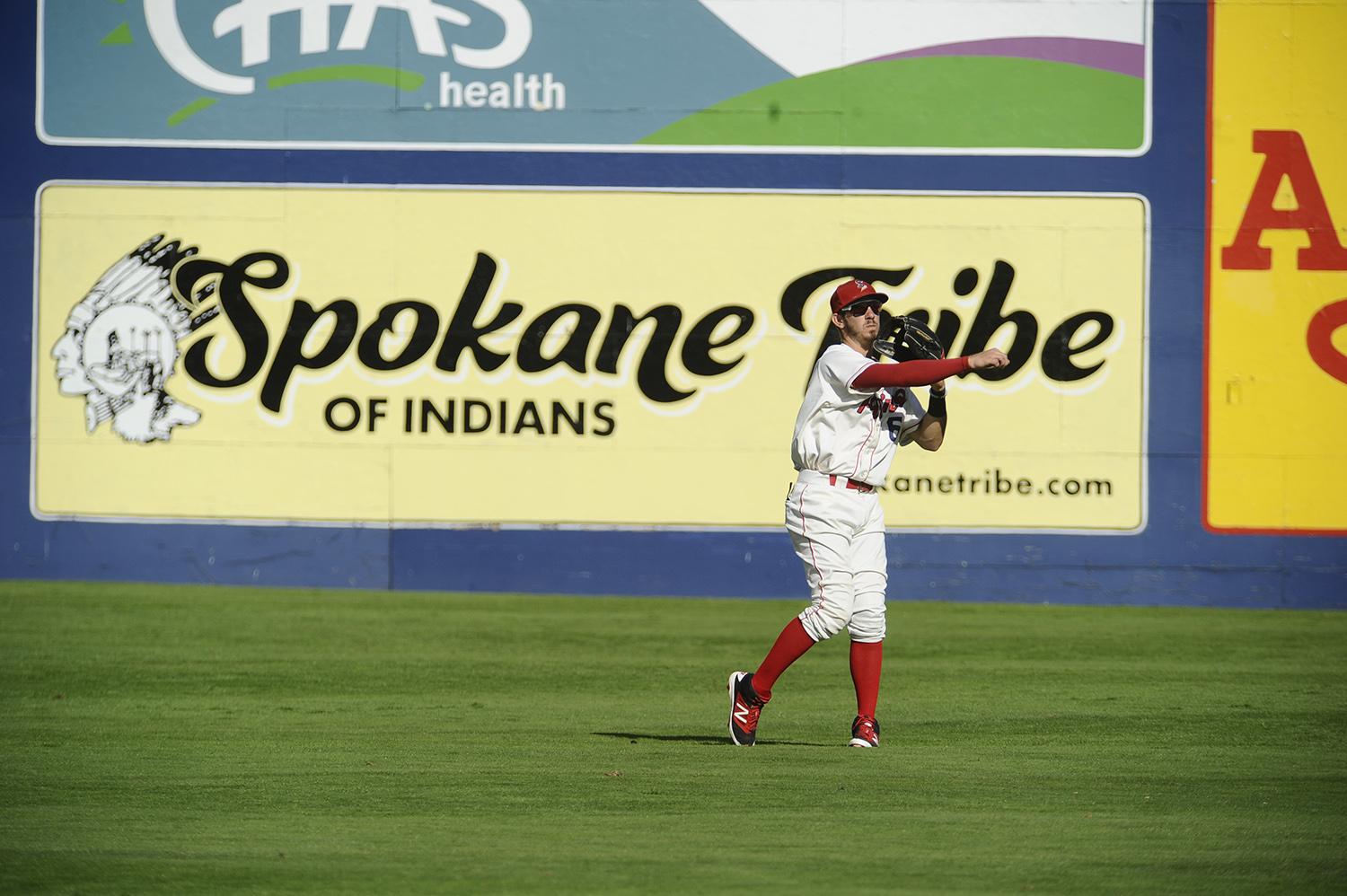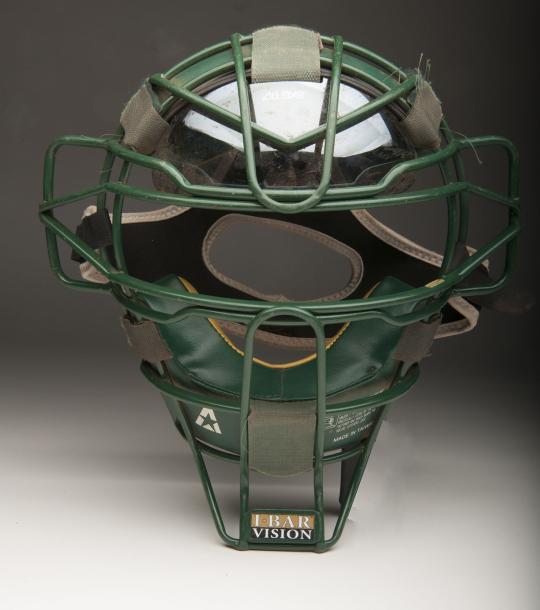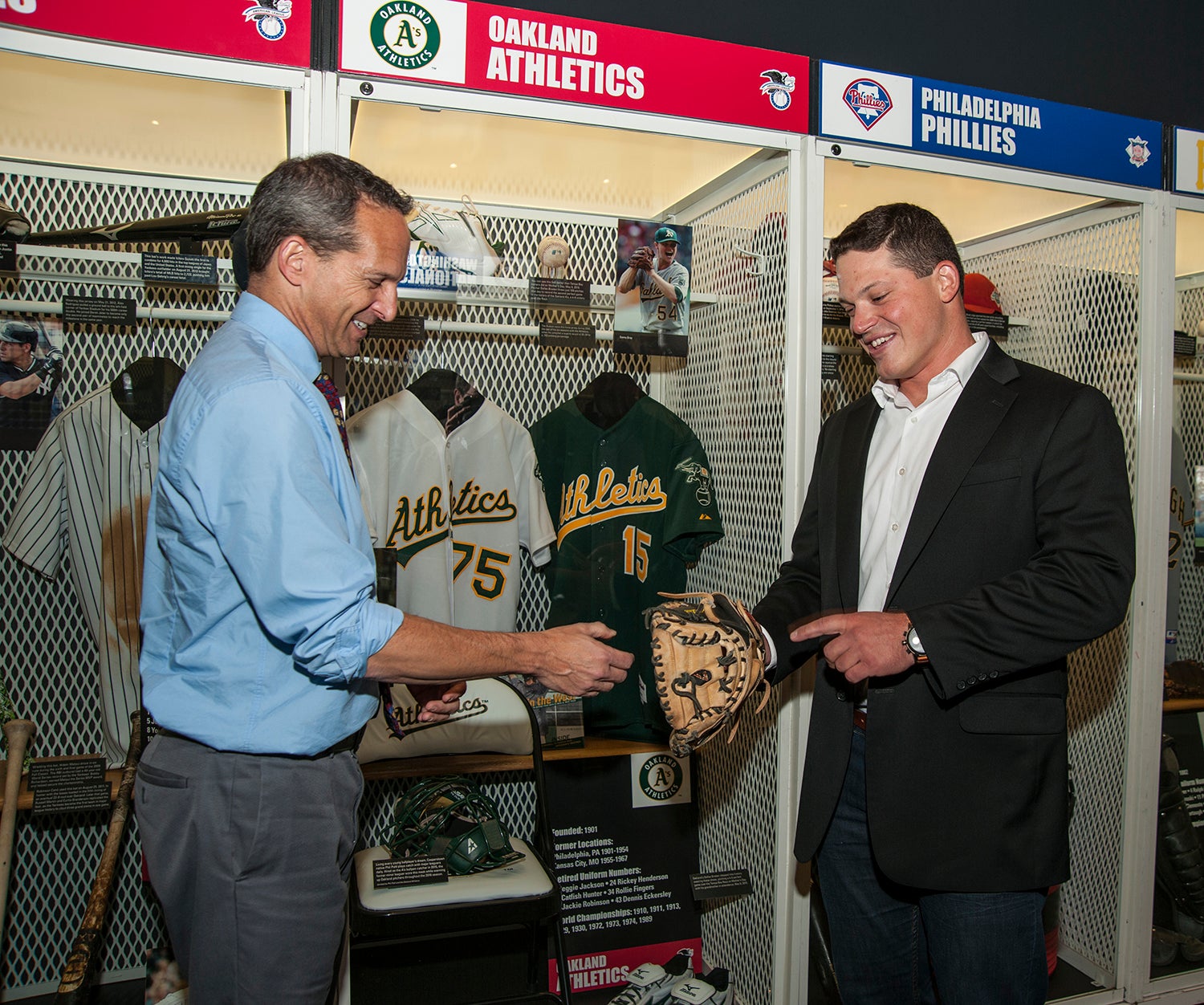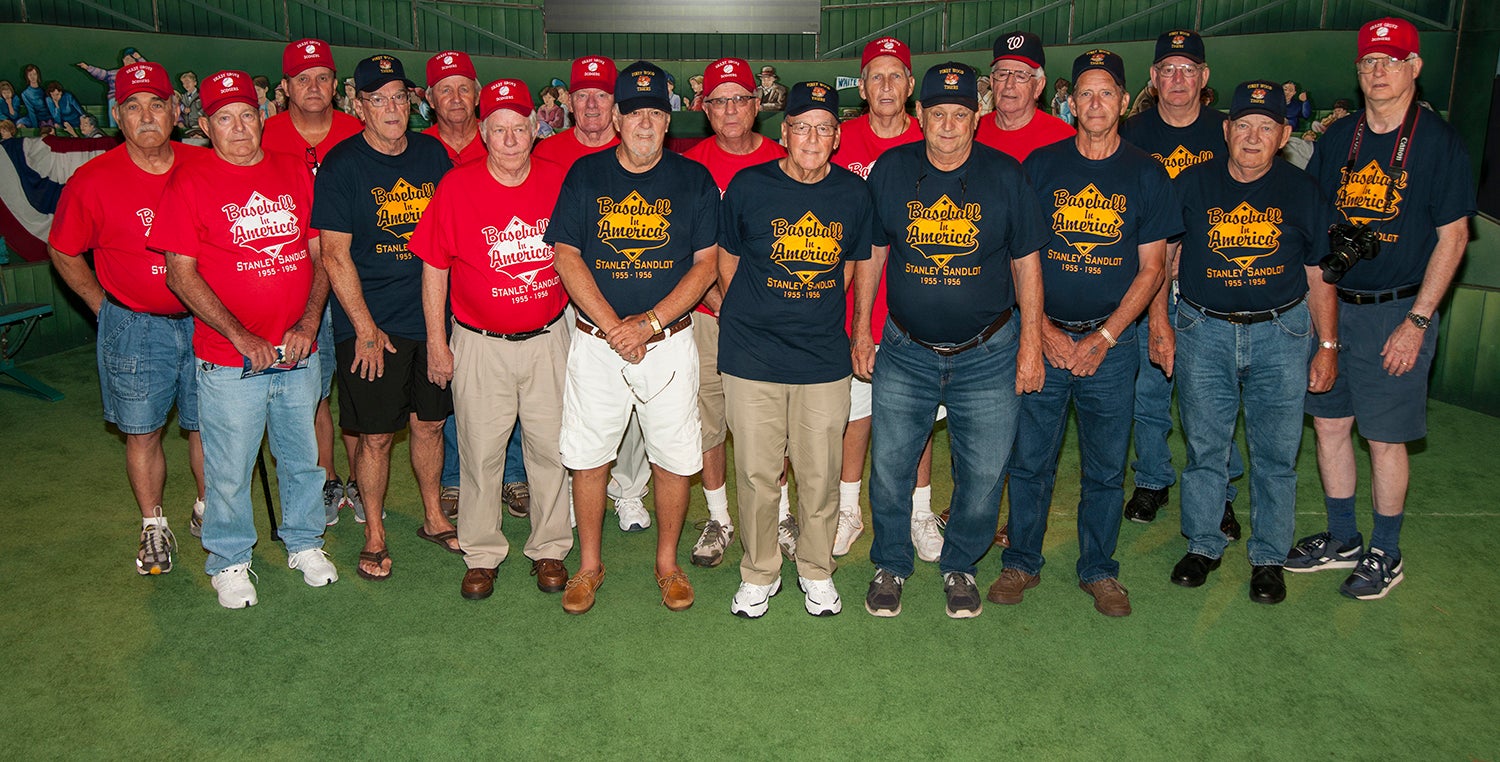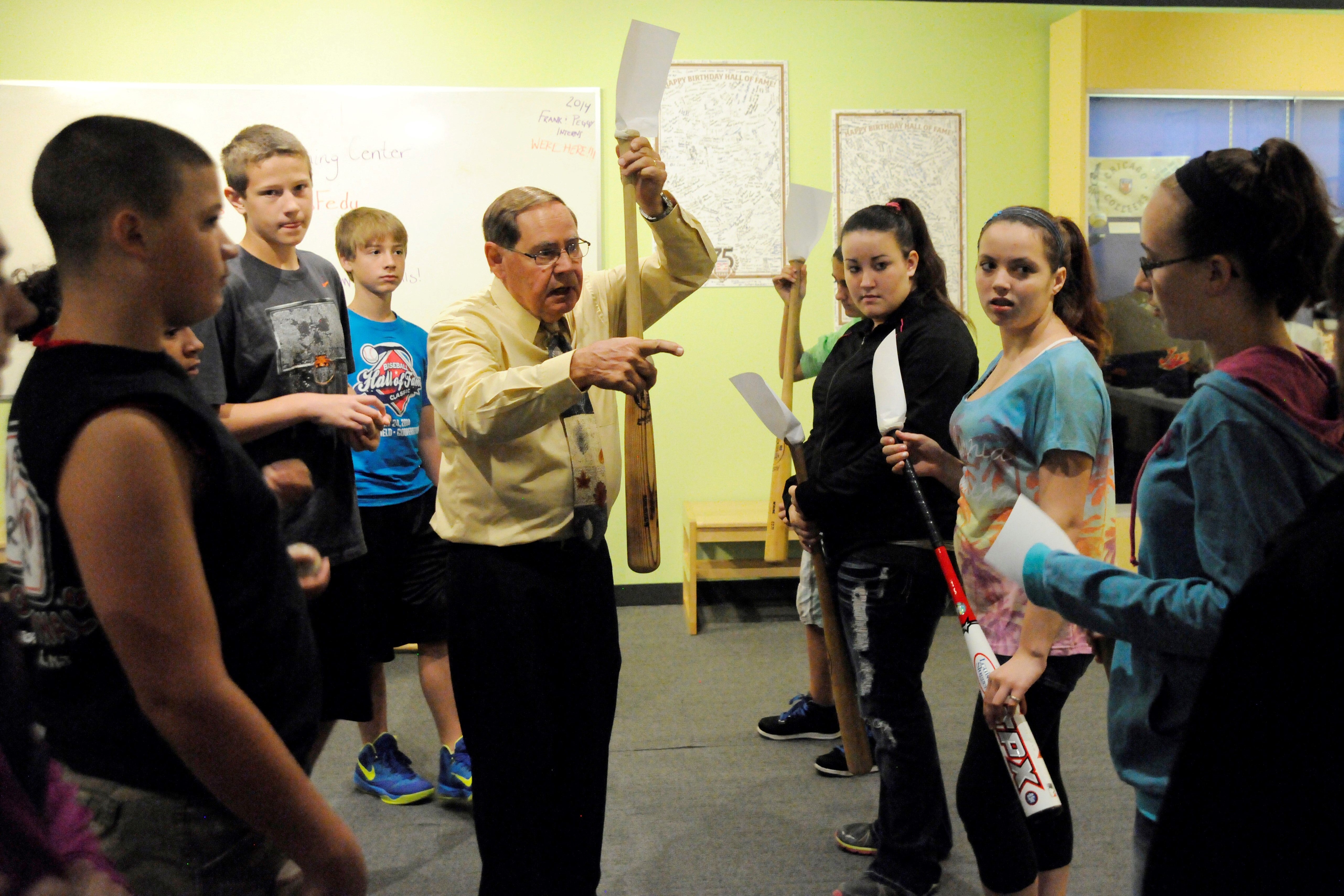“These artifacts present a great opportunity to show students what can be accomplished when two parties work together,” said Director of Education Stephanie Hazzard. “They tell an important story of respect and understanding for different cultures.”
Prior to the Spokane Indians’ donation, came two artifacts from Phil Pohl, a bullpen catcher for the Oakland Athletics who grew up in Cooperstown. Pohl donated his catcher’s mitt to the Education Department, and his catcher’s mask to the Museum, where it is currently on display in the Today’s Game exhibit. Students will be able to try on the mitt, as an example of both the evolution of baseball gear and the rewards of perseverance and hard work.
“Phil’s glove is a great example of a player from Central New York who has gone on to be a part of a Major League organization,” Hazzard said. “Students are given the opportunity to handle the glove and make the connection, in their backyard.”
For Pohl, the donation was a way of giving back to a local institution that played a big role in where he is today.
“If there’s a place to retire your gear it’s the Hall of Fame,” Pohl said in an interview. “I definitely remember going to the Hall when I was younger. It was a huge driving force for me. We were huge baseball fans, and played Little League, so I was in and out quite a bit.
“My [catcher’s glove] was the glove I’d used for the last five years,” he continued. “And if it inspires one kid, then it’s done more than its job.”

